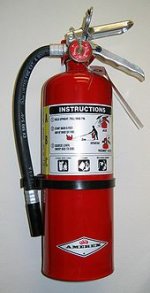just so i dont ruin the amp. what is the safest way to first power up. a variac? a series light bulb?
thanks
thanks
Variac , fuse, light bulb AND a resistive load on all outputs. All four.
First without tubes and measure all voltages.
Then install tubes starting at the input and test each stage before (Powering down first) putting the next tubes in and testing them.
Once all tubes are in place and operating properly, put a low level signal in and trace it all the way thorugh the circuit. If everything checks out ok, up the power to 1W and let it cook in for an hour. Then up it to 50% and soak another hour.
Then check the bandpass, distortion (if you can) etc.
Hook up a set of cheap speakers (I use wal mart car speakers) and a CD player for input and see how it sounds.
If there are no pops, crackels, etc, switch to a good set of speakers and a good sound soruce.
First without tubes and measure all voltages.
Then install tubes starting at the input and test each stage before (Powering down first) putting the next tubes in and testing them.
Once all tubes are in place and operating properly, put a low level signal in and trace it all the way thorugh the circuit. If everything checks out ok, up the power to 1W and let it cook in for an hour. Then up it to 50% and soak another hour.
Then check the bandpass, distortion (if you can) etc.
Hook up a set of cheap speakers (I use wal mart car speakers) and a CD player for input and see how it sounds.
If there are no pops, crackels, etc, switch to a good set of speakers and a good sound soruce.
50 watt 8ohm resistors would do it?
i have a fire extinguisher, i hope it doesnt come to that though lol
i have a fire extinguisher, i hope it doesnt come to that though lol
Last edited:
a themometer to test the transformers
a multi-meter to test the chassis is safe
and wooden chair to sit on
a multi-meter to test the chassis is safe
and wooden chair to sit on
50 watt 8ohm resistors would do it?
50W @ 8R should work - I try to have loads rated at least 25% greater than expected output of the amplifier under test - or to test the amp at reduced output related to load bank size. Keep an eye on the temperature of the loads either by an occasional (careful) touch or a temperature probe hooked (via multi-meter) up to 'em. 😉
The 1st couple of times be sure to be careful about voltage on the chassis!! That little tip saved my 🤐 on more than one occasion. 😱
Oh - Yeah - I use non-inductive loads - the inductive ones can cause problems with some amps.
Last edited:
I just measured an Ohmite 100W 10R wire wound resistor at 26uH on an RLC bridge. If an amp is sensitive to that low an inductance I'd want to know about it before I tried hooking it up to a speaker.
I just measured an Ohmite 100W 10R wire wound resistor at 26uH on an RLC bridge. If an amp is sensitive to that low an inductance I'd want to know about it before I tried hooking it up to a speaker.
OTOH - a lot of the stuff I worked on was HiFreq RF stuff - old habits are hard to break...... 🙂
Safest way to power up a new build
What I do is this: the first subsystem I complete before anything else is the power supply, positive and negative rails (if you have one) and any active regulators.
Next, check and re-check the wiring at least three times to see if anything's been overlooked or incorrectly connected. Once it looks good to go, install a light bulb in series with the AC mains. Power up, and measure voltages. At this point, you do not want to be seeing voltages that look way too low, hear humming power xfmrs, or seeing components heating up excessively. All of that could indicate trouble: bad components, short circuits, that sort of thing.
Next, power up at full power, with a suitable dummy load, and measure voltages. Again, you don't want to be seeing excessively low voltages. Once you have a working DC supply, it's easy to power up and test each stage/subsystem as it's completed. That way, if you find something amiss, you'll know exactly where to look for the problem, you'll know that all subsystems are functional when the job's done, and it's time to listen.
What I do is this: the first subsystem I complete before anything else is the power supply, positive and negative rails (if you have one) and any active regulators.
Next, check and re-check the wiring at least three times to see if anything's been overlooked or incorrectly connected. Once it looks good to go, install a light bulb in series with the AC mains. Power up, and measure voltages. At this point, you do not want to be seeing voltages that look way too low, hear humming power xfmrs, or seeing components heating up excessively. All of that could indicate trouble: bad components, short circuits, that sort of thing.
Next, power up at full power, with a suitable dummy load, and measure voltages. Again, you don't want to be seeing excessively low voltages. Once you have a working DC supply, it's easy to power up and test each stage/subsystem as it's completed. That way, if you find something amiss, you'll know exactly where to look for the problem, you'll know that all subsystems are functional when the job's done, and it's time to listen.
- Status
- Not open for further replies.
- Home
- Amplifiers
- Tubes / Valves
- safest way to power up a new build

